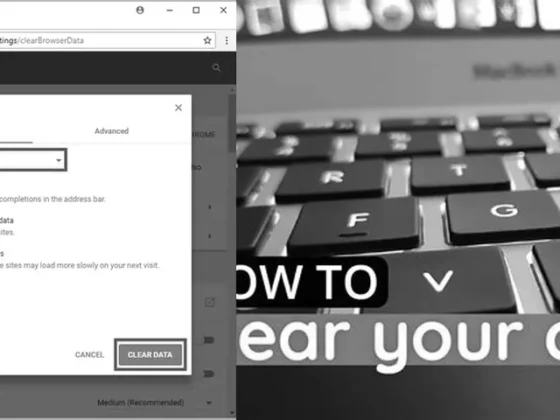Is It Safe to Use Low Power Mode on Your iPhone?: Is It Ok To Turn On Low Power Mode? The Ultimate Guide to Balancing Functionality and Battery Life
We’ve all been there – the dreaded moment when our smartphone battery is on the brink of extinction. It’s a race against time to find a charger or desperately conserve what little juice is left. But fear not, my tech-savvy friends, for there is a solution: Low Power Mode.
In this comprehensive guide, we’ll dive deep into the world of Low Power Mode on your iPhone and explore its impact on functionality. But wait, Android users, don’t click away just yet! We’ll also discuss the case for Battery Saver Mode on your beloved devices.
So, should you embrace the power-saving wonders of Low Power Mode? Or is it just a mere Band-Aid for a bigger battery problem? Join us as we uncover the truth and provide you with the best practices for managing your battery life.
Get ready to strike the perfect balance between functionality and battery life. It’s time to take control of your smartphone’s power and make an informed decision. Let’s dive in!
Understanding Low Power Mode on Your iPhone
Many iPhone users often wonder about the implications of using Low Power Mode. It’s a feature that’s been around for a while, designed to help extend your device’s battery life when it’s running low. The good news, straight off the bat, is that activating Low Power Mode on your iPhone will not damage your phone or your battery. This is a relief for those who find themselves frequently toggling this feature on and off.
What Happens When You Enable Low Power Mode?
So, what exactly does Low Power Mode do? In essence, it modifies certain settings and reduces background activities to conserve battery life. Low Power Mode restricts Background App Refresh, Location Services, and Mail Fetching. These are processes that typically occur in the background and can drain your battery without you even noticing.
Can You Use Low Power Mode Permanently?
While Low Power Mode is an excellent tool for managing your battery life, it’s not designed to be a permanent fixture. It’s more of a temporary measure for when you need to squeeze extra life out of your battery. An important thing to note is that you can manually switch your iPhone to Low Power Mode whenever you want, but you can’t keep it on permanently. This is by design, as the mode disables some functions and features that you may need when your iPhone has enough charge.
Impact of Low Power Mode on iPhone Functionality
When you’re using your iPhone in Low Power Mode, certain functionalities are scaled back. However, it’s interesting to note that notifications are not stopped when Low Power Mode is enabled. This means you’ll still be informed about important emails, messages, and other alerts, ensuring you don’t miss out on critical communications.
Feature Limitations in Low Power Mode
- Background App Refresh: Apps won’t update content in the background.
- Location Services: GPS and location tracking are limited.
- Mail Fetch: Your iPhone will not check for new emails automatically.
These limitations are worth considering if you’re someone who relies on real-time updates or if you use location-based services extensively.
The Case for Battery Saver Mode on Android Devices
Moving away from iOS, Android devices also offer a similar feature known as Battery Saver Mode. Unlike its iOS counterpart, battery saver mode on Android devices is safe to use all the time. This mode adjusts various settings to minimize power consumption. It decreases brightness, turns off WiFi, Bluetooth, data, etc., and decreases performance. For those using Android, this mode can be a more permanent solution to battery life concerns.
Customizing Battery Saver Mode on Android
Android users have the flexibility to customize Battery Saver Mode according to their preferences. This includes setting the threshold for when the mode kicks in and choosing which functions to disable.
Balancing Functionality and Battery Life
Whether you’re an iPhone or Android user, the key is balancing the need for functionality with the desire to conserve battery life. It’s essential to consider how these power-saving modes affect the way you use your device.
Creating Shortcuts for iPhone Low Power Mode
While you can’t keep Low Power Mode on permanently through the default settings, iPhone users have found a workaround using Shortcuts. You can use Shortcuts to keep iPhone Low Power Mode on permanently, but as mentioned earlier, this comes with the cost of losing features and functionality. It’s a trade-off that you’ll need to weigh based on your usage patterns and needs.
Best Practices for Managing Battery Life
When to Use Low Power Modes
Low Power Mode on iPhone and Battery Saver Mode on Android are best used when you’re running low on battery and don’t have immediate access to a charger. These modes are also useful in situations where you anticipate heavy usage and want to ensure your device lasts for as long as possible.
Tips for Extending Battery Life Without Low Power Modes
- Reduce screen brightness or use auto-brightness.
- Minimize the use of power-hungry apps.
- Turn off unnecessary hardware radios like Bluetooth and GPS when not in use.
- Keep your apps and operating system up to date.
By employing these strategies, you can help extend your battery life without always having to resort to Low Power Mode or Battery Saver Mode.
Conclusion
In conclusion, it’s perfectly safe and OK to turn on Low Power Mode on your iPhone or Battery Saver Mode on your Android device. These features are designed to help you get the most out of your device when battery life is running low. While they impose some limitations on functionality, they can be a lifesaver in critical situations. Always remember to balance the convenience of these modes with the functional requirements of your daily device use, and consider using other battery-saving tips to keep your device running smoothly and efficiently.
Use these power-saving tools wisely, and you’ll find that maintaining a charge throughout the busiest of days is well within reach.
FAQ & Related Questions about Low Power Mode
Q: Is it OK to turn on low power mode?
A: Yes, activating Low Power Mode on your iPhone will not damage your phone or battery. You can manually switch to Low Power Mode whenever you want, but you can’t keep it on permanently.
Q: Is it OK to use low power mode all the time?
A: While you can use Shortcuts to keep iPhone Low Power Mode on permanently, it is not recommended as you will lose features and functionality.
Q: Is it okay to charge iPhone in low power mode?
A: Yes, it is okay to charge your iPhone in low power mode. Low power mode is just a state of lower power consumption and will not affect the charging process.
Q: Does low power mode slow down iPhone?
A: Yes, your iPhone might perform some tasks more slowly when in Low Power Mode. However, if your iPhone switches to Low Power Mode automatically, it will turn off Low Power Mode after charging to 80%.
Q: Is it OK to keep iPhone in low power mode?
A: Yes, it is absolutely safe to keep your iPhone in low power mode. However, remember that Low Power Mode will turn off automatically if the battery level reaches 80% while charging. Also, keep in mind that Low Power Mode temporarily disables some of the phone’s features and services.


